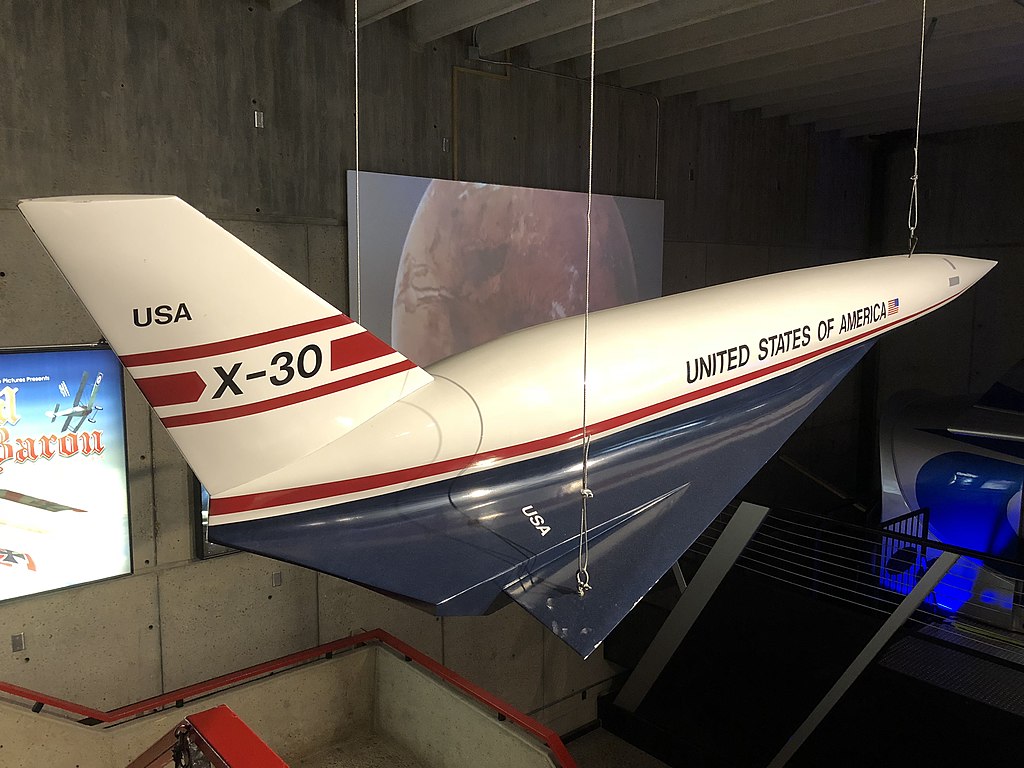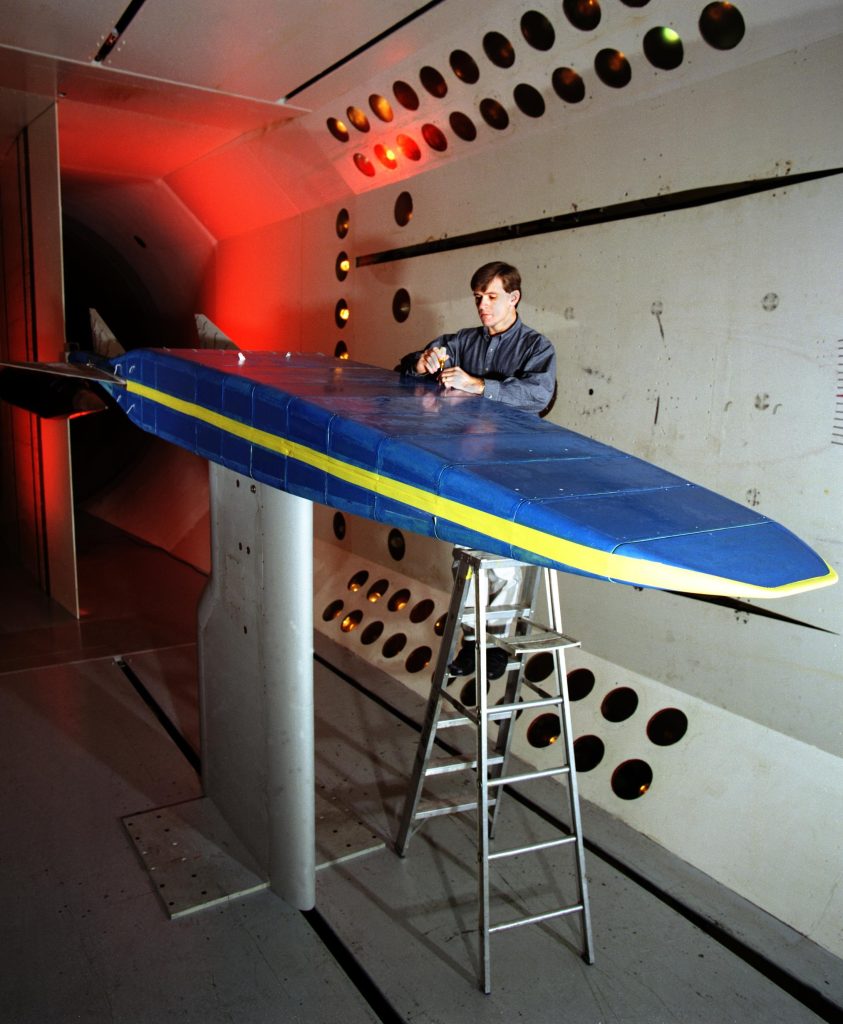

The Rockwell X-30 was a cutting-edge technology demonstrator project developed for the National Aerospace Plane (NASP). The development of this plan was a contributing fragment for a single-stage-to-orbit (SSTO) spacecraft and passenger airliner project by the United States. The goal envisioned a future NASP two-crew passenger liner (the Orient Express) that was capable of two-hour flights from Washington to Tokyo. This NASP idea was heavily influenced by the “Copper Crayon” project led by the Defense Advanced Research Projects Agency (DARPA) between 1982 and 1985. Later, in 1986, President Ronald Reagan requested for a new Orient Express in his Union Address, planting a dream of accelerating up to 25 times the speed of sound.

Build-a-Flare
The project began in 1986, and various contractors were distributed with contributions in the final design, including McDonnell Douglas, Rockwell International, and General Dynamics, who were contracted for about $35 million to develop technology for a hypersonic SSTO airframe. The contract for engine design worth $175 million was awarded to Rocketdyne and Pratt & Whitney. A contract for a flight demonstrator vehicle was kept on hold for the upcoming 42 months (end of 1989) once other parts of the project were ready. The entire program was funded by NASA and the United States Department of Defense, equally divided between the U.S. Air Force, US Navy, and other offices involved. The researchers involved in the project suggested a maximum speed of Mach 8 and a scramjet-based aircraft for a heat-resistant and protectant model. Since the aircraft was designed with the goal of reaching lower earth orbit, heat generation due to adiabatic compression was expected. Such compression could lose a considerable amount of energy. The researchers came up with a solution to recover this energy loss by passing hydrogen over the skin and carrying the generated heat into the combustion chamber.

X-30 Features
The X-30’s design was centered on integrating its engine and fuselage for optimal performance. Its shovel-shaped nose generated shock waves and compressed incoming air. Meanwhile, the aft fuselage acted as an exhaust nozzle. The engine, a scramjet, was still in developmental stages at the time. The aircraft utilized a wave rider aerodynamic configuration, with most lift generated by compression lift on the fuselage. Small fins served for trim and control; however, they hindered landing and takeoff due to the high-speed design. The airframe required advanced materials to withstand extreme temperatures of about 1,800 degrees F on the leading edge and portions of the engine. These materials included alloys of titanium and aluminum known as gamma and alpha titanium aluminide, advanced carbon/carbon composites, and titanium metal matrix composite (TMC) with silicon carbide fibers. McDonnell Douglas developed test fuselage sections with Titanium matrix composites, including a cryogenic hydrogen tank. The hydrogen tank was integrated with the fuselage section and the whole assembly, including volatile and combustible hydrogen. This Douglas model was successfully tested with mechanical loads and a temperature of 1,500 degrees F in 1992.

For the Greater Good
Despite progress in the necessary structural and propulsion technology, certain setbacks halted the progress made. The setbacks were due to the demands of a human-rated vehicle with instrumentation, environmental control systems, and safety equipment. All these requirements made the X-30 larger, heavier, and more expensive than required for a technology demonstrator. Hence, the program was canceled in the early 1990s before a prototype was completed.
Although Congress halted funding in 1993 before the aircraft was completed, the program contributed important advancements in high-temperature materials and scramjet technology, which have influenced subsequent hypersonic projects. The planned vehicle, if built, would have flown at Mach 25, measuring 160 feet in length and weighing 300,000 pounds, powered by slush hydrogen and air as propellants. A one-third scale, 50-foot-long mockup of the X-30 was constructed by engineering students at Mississippi State University’s Raspet Flight Research Laboratory in Starkville, Mississippi. This detailed model is currently on display at the Aviation Challenge campus of the U.S. Space & Rocket Center in Huntsville, Alabama. These technologies and the program’s work with supersonic-combustion ramjet propulsion were all useful to subsequent U.S. aerospace efforts in the hypersonic area, including the uncrewed X-43 “Hyper-X.”
Throughout aviation history, countless aircraft designs have sparked the imagination of engineers, pilots, and aviation enthusiasts. Many of these innovative concepts, however, never made it past the drawing board or prototype stage. “Grounded Dreams: The Story of Canceled Aircraft” delves into the fascinating world of these ambitious projects that, for various reasons, were never fully realized. From groundbreaking technological advancements to strategic missteps, this exploration uncovers the stories behind the aircraft that promised to revolutionize the skies but were ultimately grounded before they could take flight. Join us as we journey through the highs and lows of aviation history, spotlighting the aircraft that could have changed the course of aeronautical progress had their dreams not been deferred. Check our previous entries HERE.
Related Articles
"Haritima Maurya, pen name, ""Another Stardust,"" has been passionate about writing since her school days and later began sharing her work online in 2019. She was drawn to writing because of her love for reading, being starstruck by the art of expression and how someone can make you see and feel things exclusive to their experience. She wanted to be able to do that herself and share her mind with world cause she believes while we co exist in this beautiful world least we can do is share our little worlds within.
As a commercial pilot, Haritima balances her passion for aviation with her love for storytelling. She believes that, much like flying, writing offers a perspective beyond the ordinary, offering a bridge between individual experiences and collective understanding.
Through her work, ""Another Stardust"" aims to capture the nuances of life, giving voice to moments that resonate universally. "







Be the first to comment
Graphic Design, Branding and Aviation Art